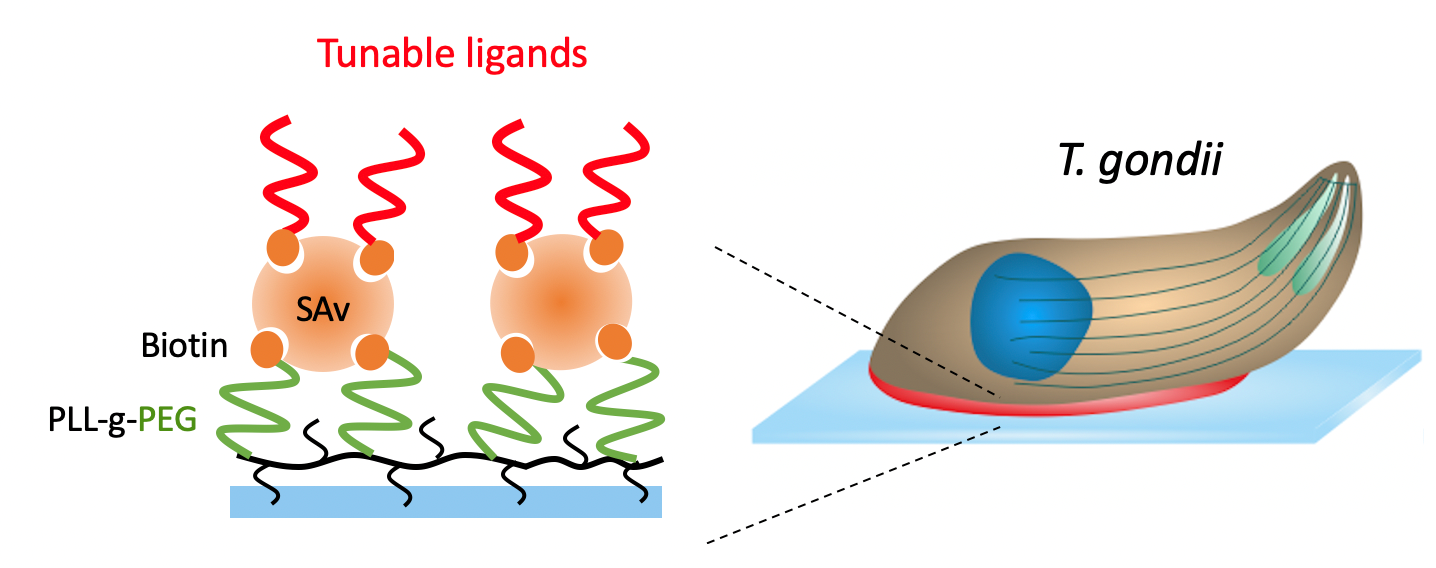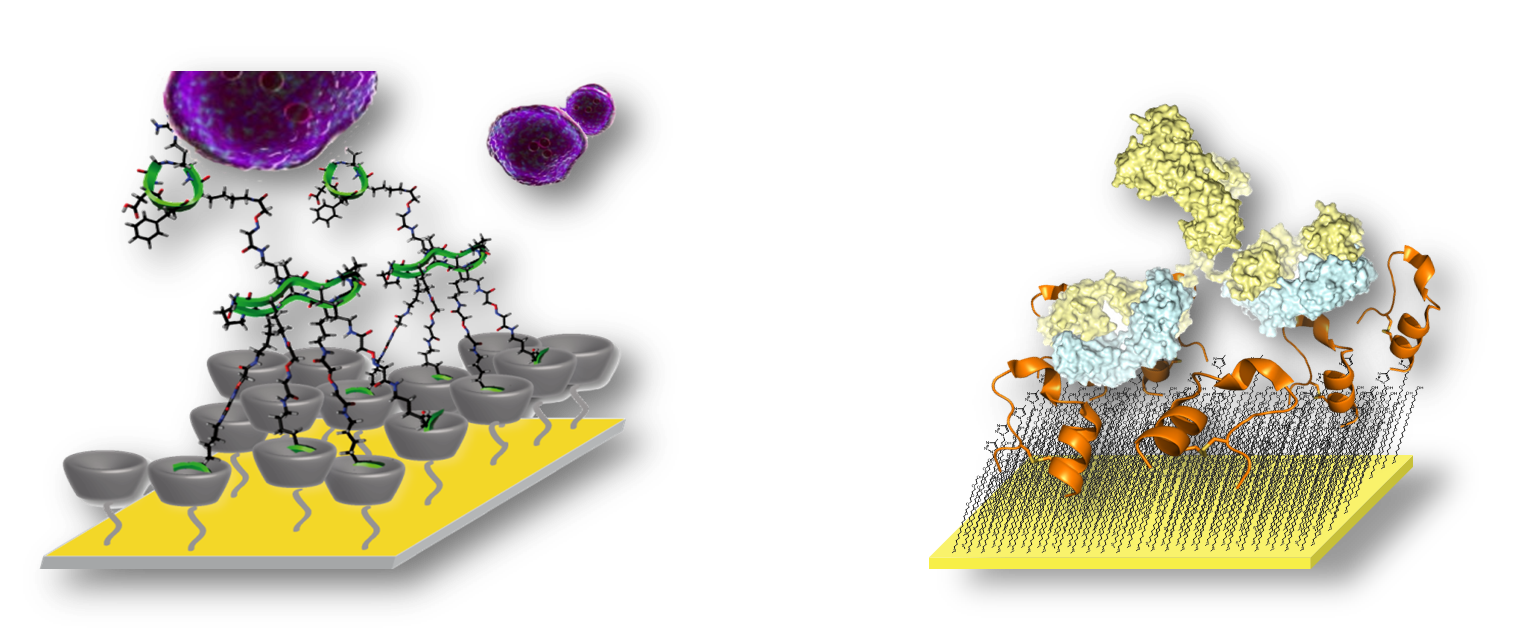- Imprimer
- Partager
- Partager sur Facebook
- Partager sur Twitter
- Partager sur LinkedIn
- Share url
- Cell/surface and antigen/antibody interactions
To study biological interactions of significant importance, we design biomimetic surfaces. For this purpose, we exploit sensitive surface techniques such as quartz crystal microbalance with dissipation monitoring (QCM-D), spectroscopic ellipsometry (SE) and surface plasmon resonance (SPR) and develop different strategies to functionalize gold surfaces providing efficient recognition to the biological partner. The surface functionalization is mainly carried out on self-assembled monolayer (SAM) of alkanethiolates bearing anchoring groups. Strategies include non-covalent attachment (i.e. biotin/streptavidin), host-guest interaction (beta-cyclodextrin/ferrocene or adamentane) and covalent coupling (NHS/EDC coupling, CuAAC). Our approach confers to the functional surfaces a highly specificity due to a background of oligoethyleneglycol (OEG) that suppresses undesired non-specific binding.
For instance, using beta-cyclodextrin/ferrocene system we developed surfaces bearing “RGD” ligand, which recognizes the alphaVbeta3 integrin (more info), for the selective isolation of tumor cells (ChemBioChem 2014 ; J. Mater. Chem. B 2017). This approach allows the design of switchable functionalized surfaces for broad applications in biological research and diagnosis. From a fundamental point of view, we are also interested in developing nanostructured surfaces to study the role of clustering in multivalent interactions, which are involved in different biological processes such as cell and bacteria adhesions and protein recognition.
In parallel, we developed antigenic surfaces for mAb recognition. The CD20 antigen which is a target for immunotherapy of leukemia and lymphoma using the monoclonal antibody (mAb) rituximab was grafted to surfaces via CuAAC. We were able to study the contribution of the statistical rebinding and the bivalent effect of RTX mAb (Anal. Chem. 2020).
Recent collaborations:
R. Richter (University of Leeds, Great Britain)
J.-L. Coll (Institute for Advanced Biosciences, Grenoble)
- Parasite/host interactions
Project Staff
Galina Dubacheva
Angéline Van der Heyden
Hugues Bonnet
Rémy Lartia

Streptavidin (SAv)-mediated assembly at interfaces provided the basis for various supramolecular architectures intended for biosensing, biospecific targeting, bioactive coatings and biomimetic model systems. Self-assembled monolayers (SAMs) and supported lipid bilayers (SLBs) are among the most studied biotinylated interfaces. We previously showed that surface chemistry plays an important role in SAv/biotin complexation and can be used to control the residual valency and orientation of SAv on biotinylated SAMs and SLBs (Dubacheva et al, J. Am. Chem. Soc. 2017, 139, 4157–4167). Recently, we studied SAv/biotin binding at the interfaces composed of poly(L-lysine)-g-poly(ethylene glycol) (PLL-g-PEG) copolymers, which are widely used in material and biological sciences. Our collaboration with the group of I. Tardieux (IAB, Grenoble) focuses on using these PLL-g-PEG/SAv coatings as tunable model surfaces to study how the adhesion and motility functions of Toxoplasma gondii parasites depend on the nature of specific molecular ligands. This project has been recently supported by the ANR PRC MiniToxoAd funding “Minimal Cell-Substrate Adhesion Conditions for Force Transmission during Toxoplasma Motility” (2024-2026). Motivated students interested to participate in this interdisciplinary project, please contact galina.dubacheva univ-grenoble-alpes.fr (galina[dot]dubacheva[at]univ-grenoble-alpes[dot]fr) (master, PhD and postdoc positions are open in our team starting from 01/01/2024).
univ-grenoble-alpes.fr (galina[dot]dubacheva[at]univ-grenoble-alpes[dot]fr) (master, PhD and postdoc positions are open in our team starting from 01/01/2024).
Collaborations:
I. Tardieux (IAB, Grenoble)
Project Staff
- Imprimer
- Partager
- Partager sur Facebook
- Partager sur Twitter
- Partager sur LinkedIn
- Share url
